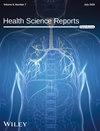Phubbing Behavior and its Association With Depression, Anxiety, and Stress in Rehabilitation Students in Iran: A Cross-Sectional Study
Abstract
Background and Aims
The study aimed to determine the relationship between phubbing behavior and its association with depression, anxiety, and stress among college students of the School of Rehabilitation at Shahid Beheshti University of Medical Sciences.
Methods
This cross-sectional survey design used a self-reported questionnaire that included demographic data, DASS21, and a phubbing scale. The Generic Scale of Phubbing was administered to 320 students from four fields of school of Rehabilitation at Shahid Beheshti University of Medical Sciences. Data analysis was done using the 22nd SPSS software version. The Kolmogorov-Smirnov, Spearman correlation, Mann-Whitney and Kruskal-Wallis tests were used for analysis.
Results
According to the non-parametric tests, the study revealed a significant association between mental health components and the primary study variables. Specifically, there was a statistically significant positive correlation (p < 0.05) between all components of mental health (depression, anxiety, and stress) and phubbing. Furthermore, a significant positive correlation (p < 0.05) was identified between all dimensions of phubbing (nomophobia, conflict, self-isolation, and problem confirmation) and the components of mental health.
Conclusion
The final results indicate that 15% of the total variation in phubbing phubbing can be attributed to the variables of depression and educational background. We suggest that phubbing behavior is linked to lower levels of well-being and mental health.


 求助内容:
求助内容: 应助结果提醒方式:
应助结果提醒方式:


